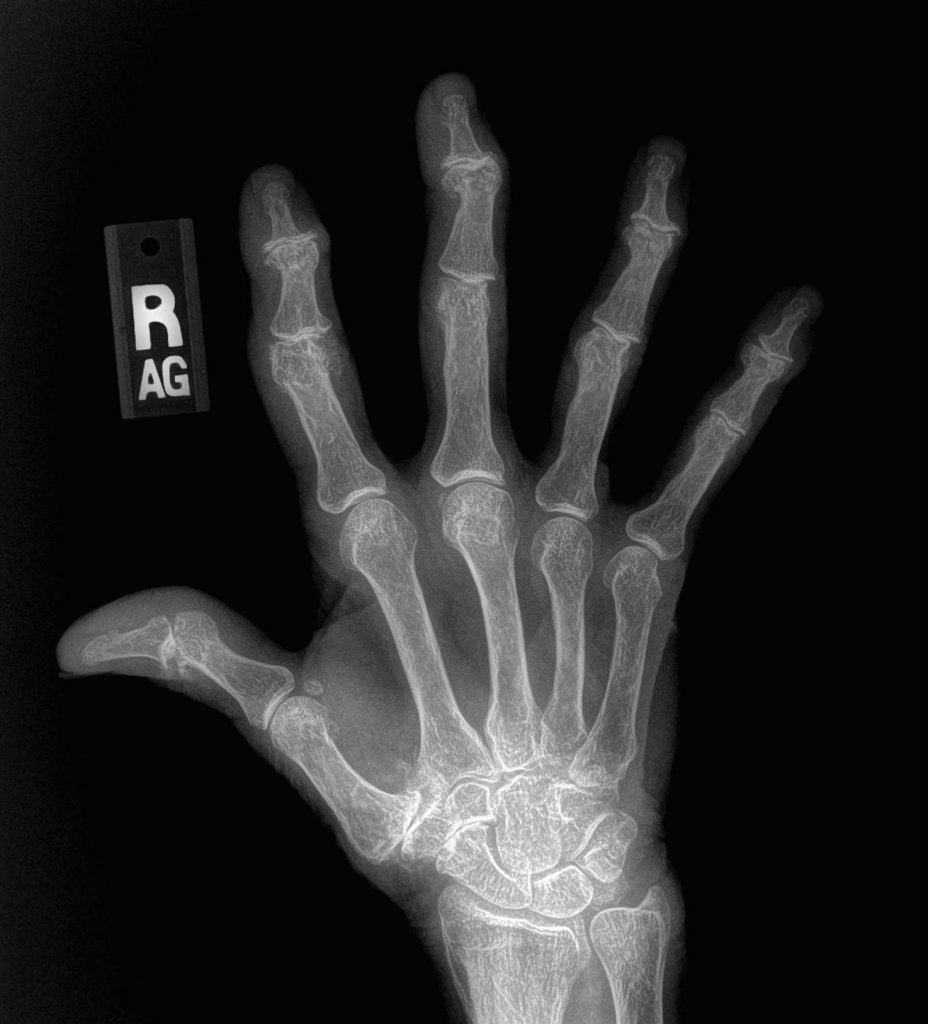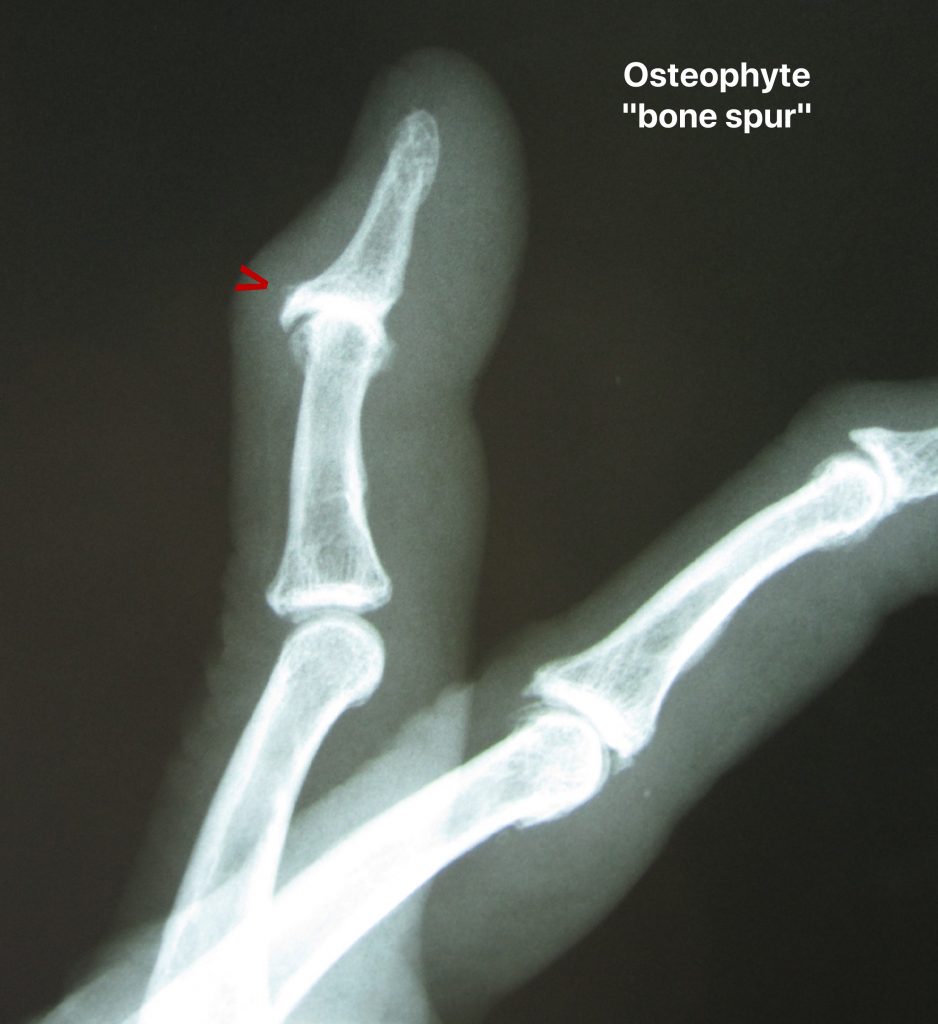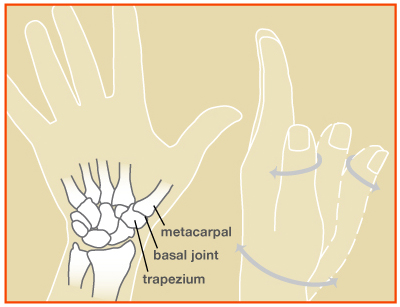Many patients say: “my doctor said there is nothing we can do for arthritis.” It is true that doctors cannot cure arthritis, but treatment of hand arthritis is available.
What is arthritis? Arthritis is a common source of hand pain in patients older than 40 years of age. Osteoarthritis is the most common type of arthritis. This is also known as degenerative joint disease. Osteoarthritis is caused from normal “wear and tear” occurring gradually over time. The small joints in the fingers and the large joint at the base of the thumb are commonly affected areas in the hand. Rheumatoid arthritis, psoriatic arthritis, and gout arthritis are other specific types of arthritis, which are less common.
What are the signs of arthritis?
What are the signs of arthritis? Patients often describe a gradual onset of “dull ache” pain in the joints and morning stiffness in the fingers. In some patients, the stiffness in the fingers gets worse and the patient notices decreased range of motion in the hand. Some of the knuckles can develop prominent bumps, which are seen as bone spurs or “osteophytes” on x-rays. These bumps are called Heberden’s nodes. In more severe cases, the fingers can develop deformity and appear crooked. Not everyone with arthritis develops deformity or much pain, however.

What causes arthritis? There are many factors which contribute to osteoarthritis including family history, injuries, inflammation, and age. The joints in our bodies are made up of cartilage, which cushions and protects the end of the bones. The cartilage allows for full range of motion. Over time, this protective cartilage becomes thin and wears away. In some patients, the cartilage surface is worn out and there is “bone-on-bone” grinding at the joint, which can be painful. This “wear and tear” process can be increased after an injury.

Treatment of hand arthritis
What is a treatment of hand arthritis? Although there is no cure for arthritis, there are several treatments which can help reduce the symptoms. Simple things patients often try at home are warm water soaks in the morning, range of motion exercises with the fingers, and warm paraffin wax dips. There are many over-the-counter products which may help such as oral medications, dietary supplements, and topical ointments. Use of oral anti-inflammatory pills (Tylenol, Ibuprofen, Naproxen, etc.) can reduce pain temporarily. NSAIDs should be used sparingly due to side-effects. Anti-inflammatory creams can be purchased over-the-counter and applied to the skin over a painful joint. Additionally, doctors can prescribe hand therapy and various types of braces or splints to help support arthritic joints. Corticosteroid injections (cortisone shots) can be used sparingly for a painful joint to reduce pain and swelling. Surgery is an option if non-surgical treatments are not satisfactory.
Is surgery needed for hand arthritis?
Is surgery needed for hand arthritis? Most people do not require surgery for hand arthritis. If patients have tried non-surgical treatment and still have severe pain, surgery might be recommended. Depending on the patient and the affected area, either joint replacement or joint fusion surgeries are options. The base of the thumb joint can be treated surgically with arthroplasty surgery, which can significantly decrease pain and improve hand function. Your hand surgeon can discuss these options with you.

Raleigh Hand to Shoulder Center doctors are experts in the diagnosis and treatment of hand conditions including osteoarthritis. They are members of the American Society for Surgery of the Hand and they are board certified by the ABOS. If you have hand arthritis, consider making an appointment with a hand and upper extremity specialist at Raleigh Hand to Shoulder Center.


